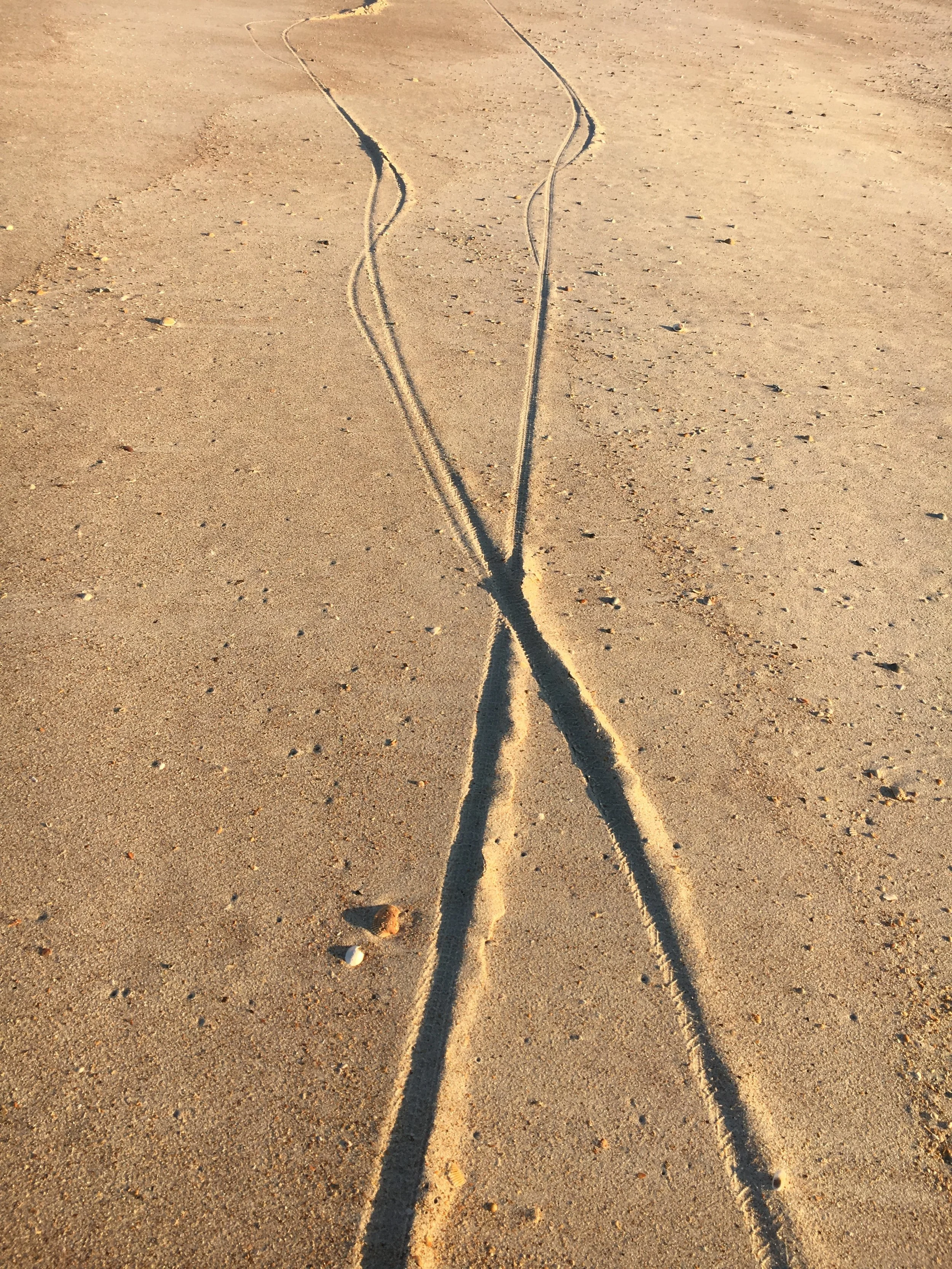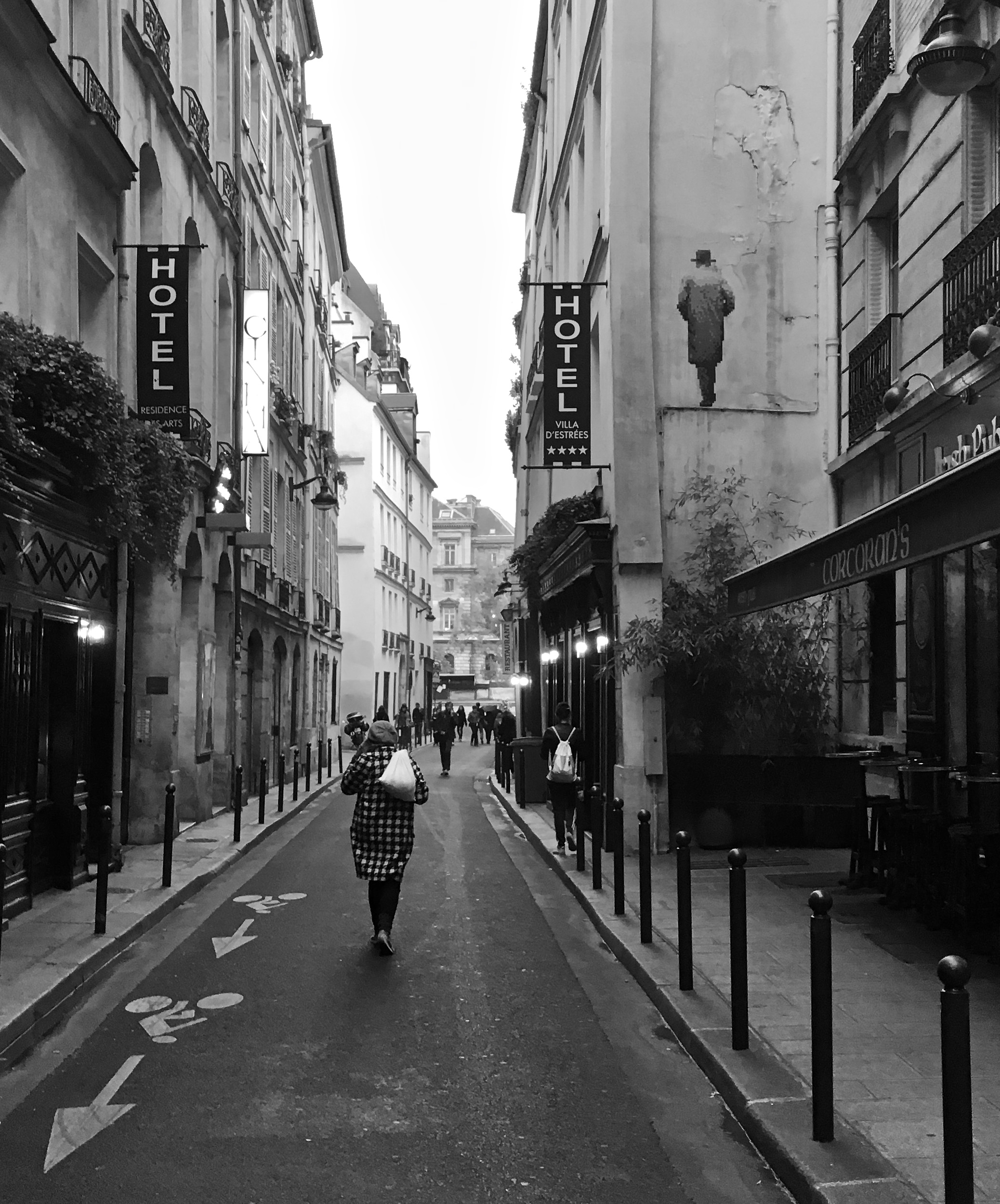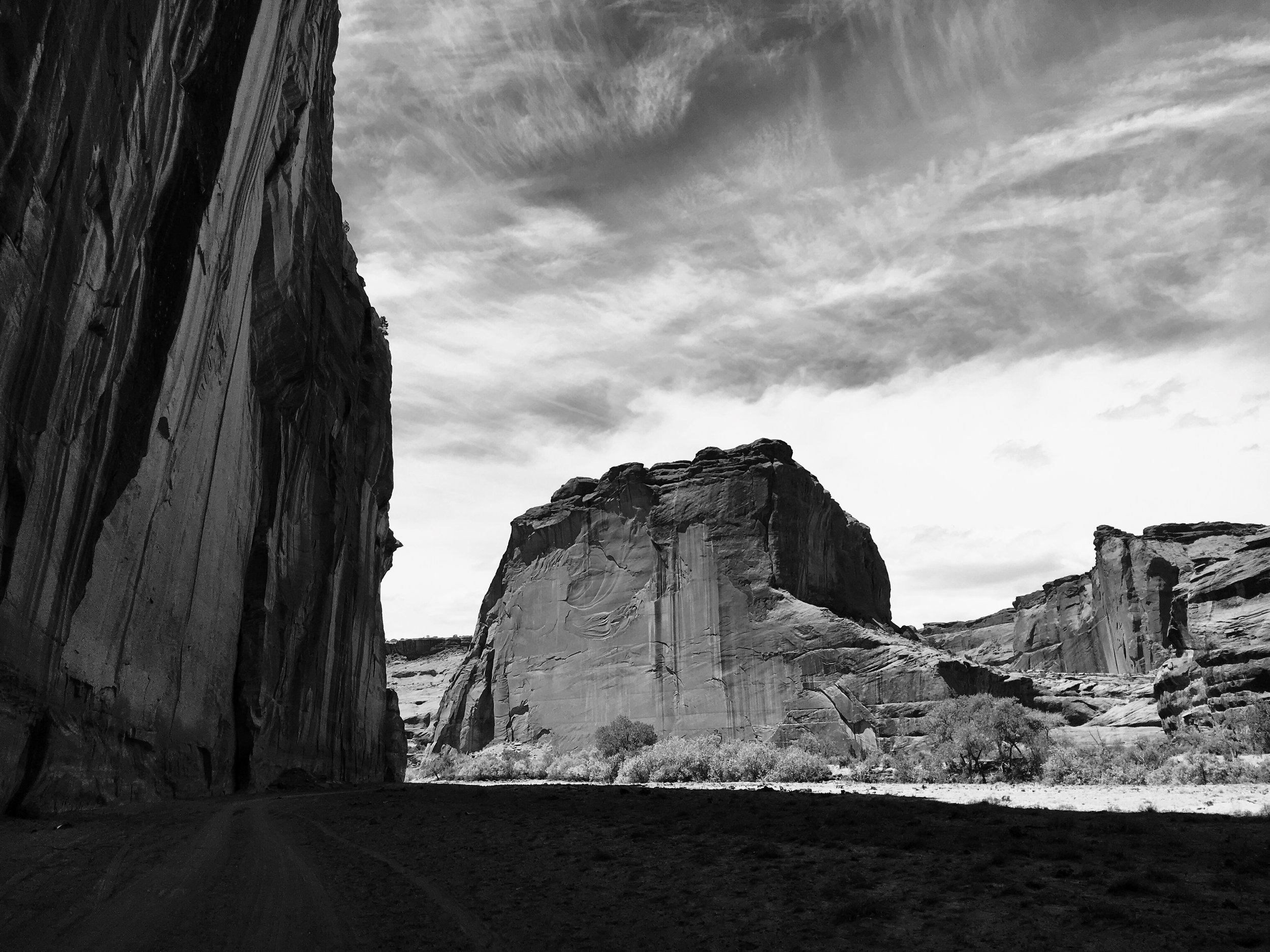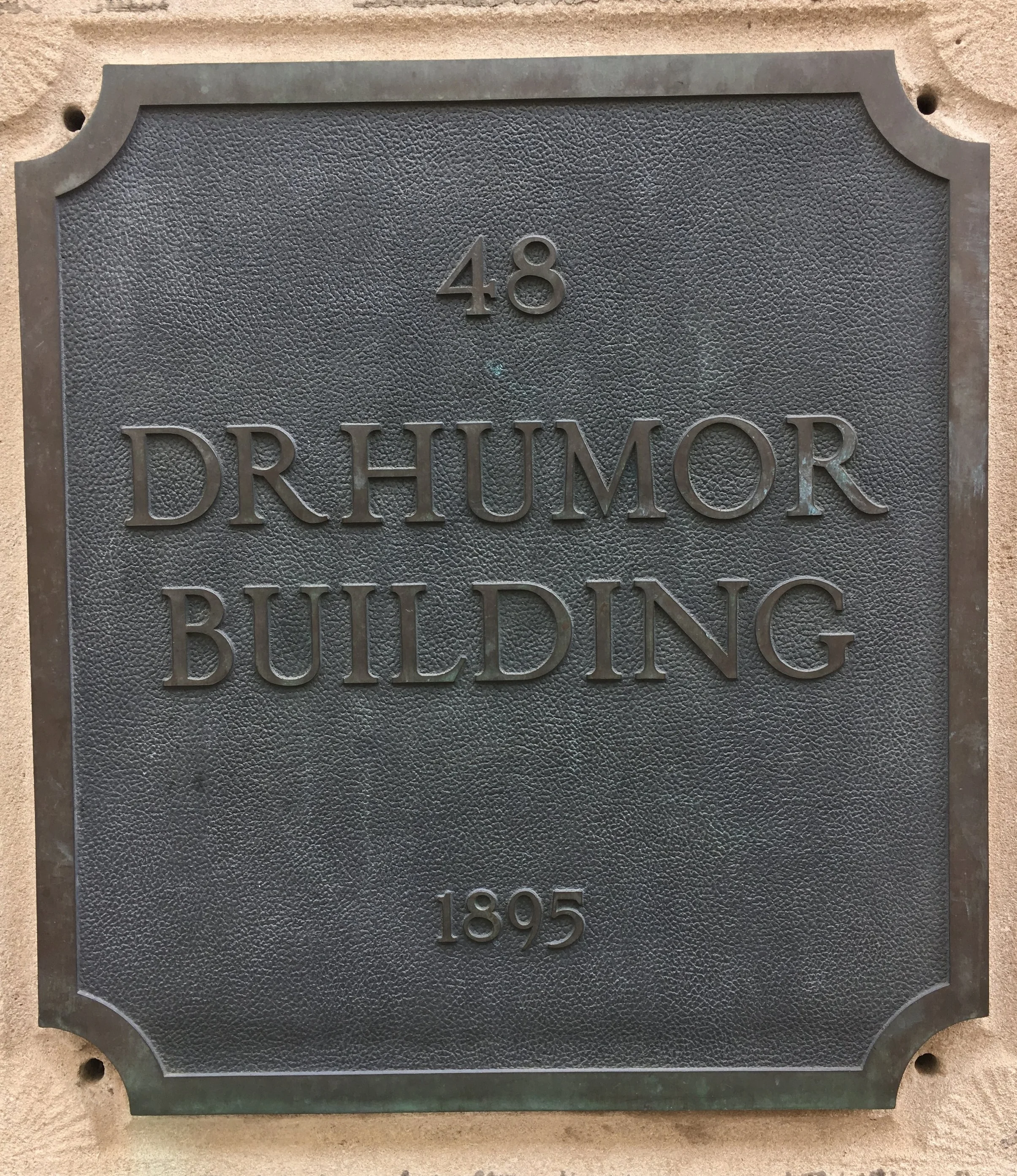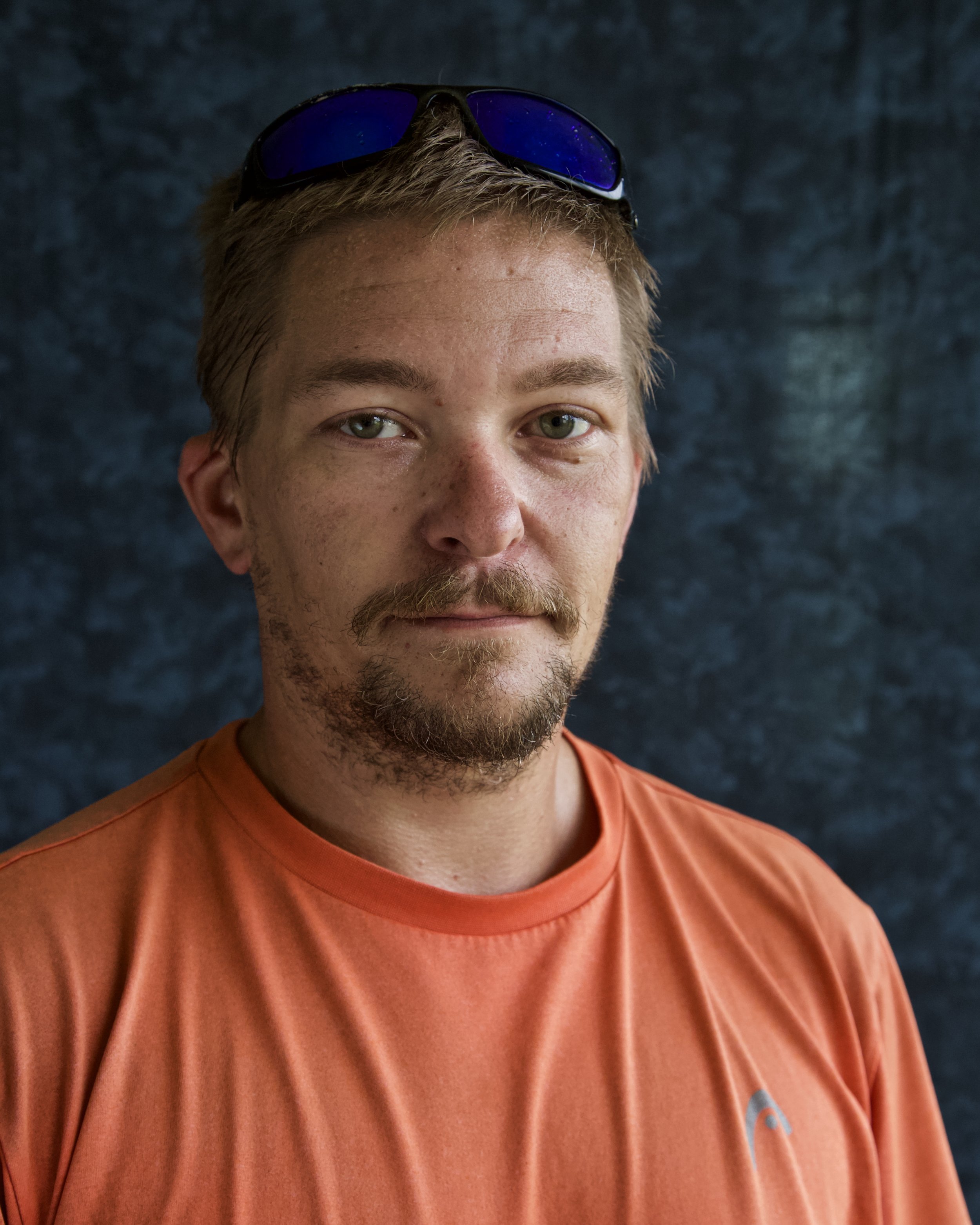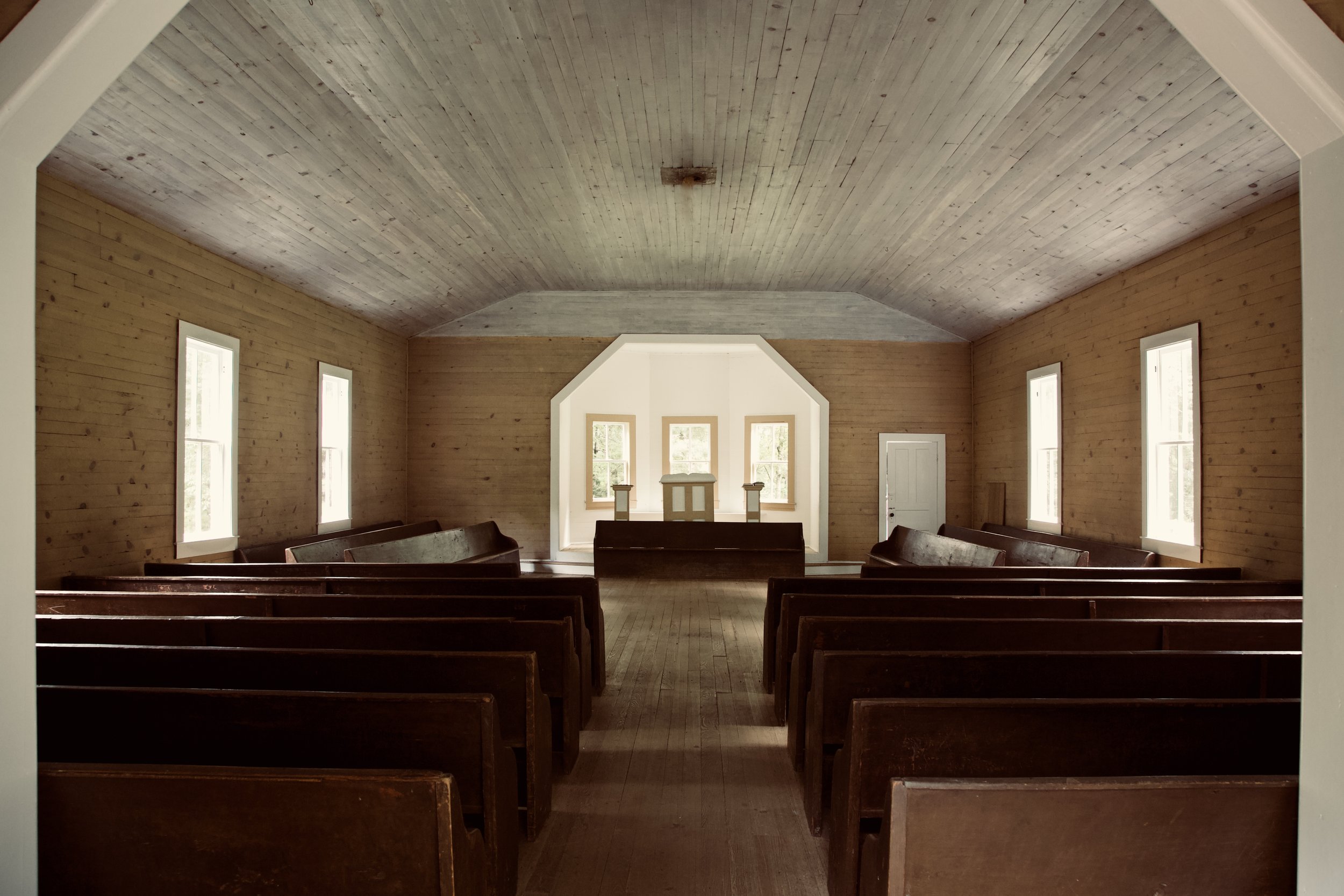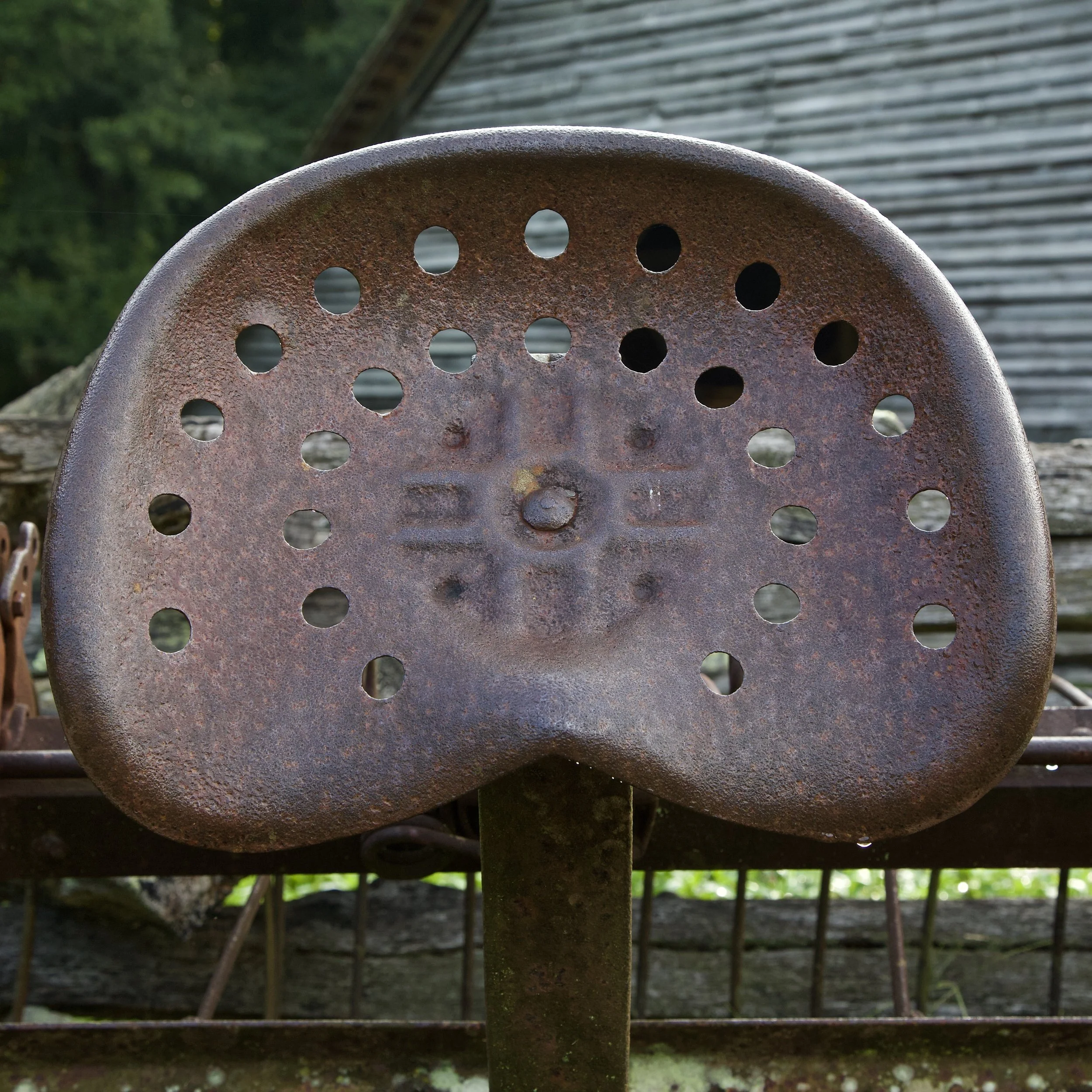The Greatest Shot Ever - How I Saved Ramar of The Jungle
In late June 2017 a Canadian Army sniper killed an ISIS militant from a distance of more than two miles, which is the longest confirmed rifle shot on record. With the best equipment available, it still took 10 seconds for the bullet to reach the target. Given the conditions and all the variables involved, this is an amazing accomplishment. However, I submit this was only the second greatest shot in history. Nearly 60 years before, in the summer of 1958, four months shy of my 9th birthday, I killed a hippopotamus in Africa with one shot from a Daisy Red Ryder BB gun while sitting in my grandparent’s living room in rural southwestern Indiana. Since you won’t be able to find any information on the event on Google and two of the three people who were present that day are long dead, this account will have to stand as the historical record. Perhaps some background information will help you understand this amazing feat.
My dad was a crack shot, a great teacher, and a stickler for weapon safety. The first lesson I was taught was to treat all guns as if they are loaded. I learned quickly and was on my way to be a good rifle shooter when he bought me a Daisy Red Ryder BB gun for my 8th birthday. For a time, I was the scourge of paper targets, sparrows, and starlings in our neighborhood. Then my weapon stopped working. Try as he could, my dad could not get it to shoot BB’s. The weapon would cock and discharge, but nothing would come out of the barrel. My weapon had been reduced to an “air rifle” because air was the only thing coming out of the barrel. Even so, it was my constant companion in neighborhood battles between cowboys, Indians, or whatever groups we decided were going to fight on that day. The number of “air bullets” I fired at my playmates from both long and close range was in the thousands and I never missed.
In early June, Mom and Dad had to go out of town on business for a few days, so that meant I got to stay with my Grandpa and Grandma Shawhan at their farm. It was a great place to be a kid because there was always something to do from hunting, fishing, or skipping rocks across the pond. L. J. and Minnie had married young and raised eight children. That would have been tough enough on its own, but challenges brought by The Great Depression and the rationing that accompanied WWII tested their mettle. Still, Minnie leaned into her faith through it all. Though she seemed to be perpetually tired from all her responsibilities around the home, there were no complaints and she bore her burdens with a remarkable, quiet grace. I don’t recall ever hearing her laugh out loud, but there were times when you would see her smile and the joy would show in her eyes. Strong language, tobacco, alcohol, and playing cards were not acceptable under her roof. Grandma Minnie was just one of the kindest people I ever met.
How L. J. and Minnie got together and stayed together is one of the great mysteries of the 20th century. Grandpa was just about the opposite of Minnie in every way. He was loud, coarse, overweight, and smoked Kool Menthols for years. Perhaps L. J. had other talents, but the one he was known for was the ability to expel methane at a volume loud enough to rattle the windows in the old farmhouse. He greeted the arrival of grandchildren with a feeling similar to seeing locusts descend on his fields. In L. J.’s world grandchildren would only eat his food and tear up something before leaving. His opinion was based on certain experiences. He had been ejected from the back of a farm truck by one grandchild, had his car’s gas tank filled with water by another who was playing gas station, and had his morning reverie of a peaceful breakfast shattered when another grandson surprised him by discharging a small explosive device that showered him with confetti and ribbons. Reflecting on those events, I think his view of grandchildren was justified.
I tried to give Grandpa a wide berth and stay on his good side. He didn’t put up with a lot of crap and was quick to let you know when he had enough. Usually, Grandma heard the ruckus and, like Jesus on judgement day, intervened on our behalf.
L. J. didn’t have many valuables, but one of his treasures was the 21” black and white console television that sat in the living room. It was here that everyone gathered to watch Gunsmoke, Have Gun – Will Travel, and Wagon Train. This was also the only time L. J. thought grandchildren could be useful. Grandpa was not skittish about using us as two-legged remote controls.
The day that would change my life started out like most others on the farm. After getting dressed, I walked through the living room and propped my BB gun in the corner before going to the kitchen for breakfast. Grandma didn’t allow guns at the table. Following the meal, Grandpa went off to do some chores, Grandma cleaned the kitchen, and I headed to the living room to watch TV. Picking up my gun by the barrel, I made my way to the television and turned it on before plopping down in a small upholstered swivel chair to watch one of my favorite shows: Ramar of the Jungle. It was the story of Dr. Tom Reynolds whose parents were missionaries and he returns to Africa to treat the natives. In this episode, the good doctor and his faithful sidekick Professor Howard Ogden were crossing a river when they were suddenly menaced by a hippo that was about to flip their small boat.
Instinctively, I grabbed my rifle and cocked it as I brought it to my shoulder. Just as Dad taught me, I lined up the sights on the hippo, exhaled, and squeezed the trigger. Like it had done thousands of times before, the air rifle made a slight popping noise and the hippo slipped to the bottom of the river. In my mind the beast was a goner because I don’t miss. Ramar and Howard would thank me later. But I immediately sensed something was different about this shot. The familiar popping noise of the gun was quickly followed by a distinct ping. The place where the hippo had been on the TV screen was now occupied by a small hole surrounded by a circle of broken glass fragments a bit larger than a quarter.
For a short time, I had an out of body experience and time stood still as I examined what happened. On the floor in front of me was a BB, which, at that moment, appeared to be nearly as big as a softball. It had been lodged in the barrel for months and picked this moment to come out. It struck the glass plate in front of the TV tube and then rolled back toward me. There was no fixing the glass. It would have to be replaced.
The moment I reentered my body, everything began to move at hyper speed. I knew I wasn’t going to see my ninth birthday. My folks would kill me for embarrassing them and having to buy Grandpa a new television. But I also knew that wouldn’t happen because L. J. would take me out as soon as he saw the TV. I didn’t know what he was going to tell Mom and Dad about my disappearance, just that I would be in an unmarked grave somewhere on the farm. My heart was pounding. I knew there were only moments before my misdeed would be discovered and I had to do something to buy enough time for my getaway.
Using all the logic my eight-year-old brain could muster, I had a stroke of genius. Running to the bathroom I returned with a bath towel. I stuck one end of the towel under the planter Grandma kept on top of the television and draped the rest over the front of the screen. No one would notice that. In the time it took me to cover the fifty feet between the TV and the front door to the house, I realized there was no place for me to run. The best I could do was get to a safe place beyond L. J.’s reach and stay there until he calmed down or Grandma would show up and save my life, though I wasn’t sure she was up to this task.
There was only one option; the big sugar maple tree in the front yard. It had lots of leaves for cover so it would be tough for Grandpa to get a clear shot at me with one of his guns. He was too overweight to do any climbing, and though there was a concern that he might be mad enough to cut the tree down with me in it, I knew the sound of the chainsaw would get Grandma’s attention.
As I reached the highest limb that I thought would support my weight, I heard the front door open as Grandpa bellowed my name. “Ron! Ron! Where the hell are you?” “Up here, sir,” I replied. “Did you shoot the TV?”, he inquired. Young as I was, it was still clear to me the list of suspects only had two names; mine and Grandma’s since we were the only people in the house. I briefly thought about asking him if he would be willing to spare my life if I pleaded guilty to the lesser crime of improper use of a bath towel but decided to do the right thing. “Yes, sir, but it was an accident”, I said. “You get your ass down here right now”, he emphatically responded. Based on the volume and tone of his voice, I determined he wasn’t all that interested in my motives. There was a dead TV in his living room, and he was going for some biblical retribution. “No, sir. I’m just going to stay up here,” I replied.
That reply led to more threats, which made me more determined to wait until Grandma Minnie arrived on the scene. Luckily, it was only a few minutes. Once she heard from both sides, Grandma said something to Grandpa that I couldn’t make out and he unhappily walked away. When he was out of sight, she convinced me it was safe to climb down and assured me that nothing bad would happen to me. I knew her word was good.
As it turned out, the TV wasn’t dead, only wounded. My folks offered to buy L. J. a new one, but he declined, saying, “Leaving it this way will be a reminder to all of the other little shits that come here to visit.” It was, but not like he intended, or perhaps it was exactly what he hoped for. The cracked glass would remind all my aunts, uncles, and cousins to ride me about shooting the television for the next 40 years. Not one of them talked to me about my incredible accomplishment of killing a rogue hippo with a single shot from a BB gun at a distance of over 7,000 miles. I’m still waiting for a thank you card from Ramar and Howard.
The sugar maple tree is still standing in front of the farmhouse. It looks a bit worse for wear, but so do I. The last time I visited, I had an inclination to climb it one final time, but my good sense took over. I did accept its invitation to sit in the shade for a while with my back against the trunk, which was just as comforting as its branches had been 60 years before.
The Art Critic
On the banks of the Seine in the Tuileries Gardens you’ll find Musee de l’Orangerie. Originally built to protect orange trees in the winter before they were planted, the building now houses an impressive collection of impressionist and post-impressionist paintings and one sleepy young man, who was not stirred by Monet’s “Water Lillies” or any of the numerous works by Cezanne, Matisse, Rousseau, and Modigliani.
Unlike the youngster, Monica and I found the museum to be delightful and a must see for anyone who loves Monet. You can learn more by clicking the link below.
https://www.musee-orangerie.fr/
My Two Cents Worth on Money
While walking the neighborhood a few days ago, I saw two pennies along my route. They had been there for a while and were showing considerable wear from the time they had spent on a busy street. Though the stamping on each side was almost gone, I didn’t hesitate to snatch them up and carry them home. My views on money were largely shaped by the adults who influenced me as I grew into adulthood. I spent a lot of time around my maternal grandparents and paternal grandmother. All had lived on farms in rural Indiana, didn’t have a great deal to start with, and had weathered The Great Depression, which profoundly impacted them. My Dad was in his early teens during the worst of it while Mom was not yet in elementary school. After that came WWII and rationing, so the Shawhan and Richardson families knew how to stretch their meager resources to make ends meet. That last bit of ketchup in the bottle could be mixed with water to make something resembling tomato soup, but mostly it was a warm, flavored liquid that was better than going hungry. Dad’s income from his mining and construction business was spotty, but Mom and he were always able to keep a roof over our heads and food on the table, though there were stretches where bologna on crackers and chicken noodle soup were frequent entrees.
I learned to scan the ground while I walked. It was a good day if I found soda bottles that could be turned in for a few cents at the local gas station. It was a great day if I found coins. All of that “found money” went into my piggy bank, which wasn’t a pig, but a small black ceramic teapot Mom gave me. Mixed in among the coins was some “folding money,” the term Dad used for paper bills. Those came to me on birthdays, Christmas, and whenever the grading period ended. I learned early that being a good student could have financial as well as academic benefits. The real treasures in the teapot were my $2 bills and silver dollars, which were not to be spent under any circumstances. The lessons I learned about saving, discipline, and delayed gratification continue to serve me well.
Though I don’t know how much money I’ve picked off the ground over the years, I can remember the most I found at one time. Late one evening after a basketball game I pulled into a gas station. As my tank was filling, I decided to wash my windows and found a $100 bill near the trash can. That was a very good day. It’s pretty rare to find paper money and most of what I get are small coins, but I stop and pick them up without fail and they go into a repurposed large plastic Planter’s Honey Roasted Peanuts jar. It takes about a year to fill the jar then I take the contents to a store with one of the change sorters. The last payout was almost $280, which I think is a pretty good investment for being observant and willing to bend over.
I’ve been a lot of places in the U.S. and have noticed that almost without fail it is those of us in a certain age group that tend to pick up coins. Younger folks do not appear to be interested in small change. Perhaps they are focused on becoming the next great social media influencer or internet entrepreneur. I wish them well. Less competition for me.
Relationships
For me, these bicycle tracks on the beach are a visual metaphor for relationships. There are people to whom we stay close for long periods, while we interact with others from a distance. Events seem as likely to bring us together as they are to move us apart. While it would be easy to infer that long-term relationships have a higher significance or greater meaning, I have experienced brief encounters that changed the direction I was heading, so length does not equate to impact.
Monica and I like to say that when things are going well, we are in relationship and when they are not we’re in relations**t. Our goal is to have a lot more “ship” and a lot less s**t.
You Take The High Road and I'll Take The Low Road
This is an image that was created because my phone was ready while my “professional” camera was safely in my shoulder bag. I’ve missed enough decisive moments to know this one was too fleeting to get the DSLR out. While there are a few elements present that typically comprise good photos, there are more that could be added to a “Don’t take it” list:
The primary subjects have their backs to the camera
The light is flat
The sky has no clouds
I like that the lady with the bag on her shoulder and the man on the hotel wall are both wearing long coats and are going in the same direction. That the hotels across the street from each other use the same typeface makes me wonder if they have the same owner. I wish this could have been made in front of a Scottish pub to stay true to the heritage of “Loch Lomond,” the song whose lyrics are in the title, but alas, all of these visual elements were on display in front of an Irish pub on a side street in Paris. My life is filled with little disappointments. :-)
Canyon de Chelly
Canyon de Chelly National Monument is in the “Four Corners” region of the U. S. near Chinle, AZ. It has been home to native Americans who have lived there uninterrupted for over 5,000 years. Today, about 40 Navajo families live there, tend livestock and farm a small portion of the almost 84,000 acres that comprise the monument. The history of the peoples who made the canyon their home can be seen in the ruins and petroglyphs found there.
We booked a full day with one of the Navajo guide companies and were treated to an exceptional tour. The canyon is both unforgivingly harsh and breathtakingly beautiful. The shadows cast by the rock formations when the sun is low create sharp lines on the rocks and canyon floors.
This image was created on our way out. You can get a feel for the immenseness of the place and the steep, and often sheer, walls on both sides.
In Praise of Art
While in Asheville, NC in early September, Monica and I visited Lexington Glassworks and were thoroughly impressed by the quality of work produced by the in-house artists. Though there were many beautiful pieces on display, this one caught my eye with its combination of color and intricacy of the overall design.
You can see more of their work at: https://www.lexingtonglassworks.com/
On A Clear Day You Can See Forever
The title refers to a Broadway play of the same name, but the place this image was created is a bit over 1800 miles west. Coming out of Chaco Canyon National Historical Park is a stretch of road that offers unrestricted views of the incomparable New Mexico skyline. And while you can’t really see forever on a clear day, the view is so stunning that you just might not care.
Ecclesiastes 3:1
Ecclesiastes 3:1 tells us, “There is a time for everything, and a season for every activity under the heavens.” While in Cades Cove during early September I came across this one leaf that had landed on a section of split rail fence. It was a beautiful morning with dew glistening on the grass and early enough that we pretty much had the place to ourselves. I looked about for other leaves on the ground and saw a few. For the people who lived here in the 1800’s, these few leaves signaled a change in seasons and the need to lay in provisions for the coming winter. Being able to read nature’s signals was a survival skill in the days before weather forecasters.
Who Knew?
Wow! A whole building dedicated to Doctor Humor. I’ve heard some pretty good physician jokes in my time, but not much lately. Perhaps this type of humor reached its zenith the year this building in Asheville, NC was built. :-)
Obviously the building is not as I described, but the name plate got me to wondering if there was a building dedicated to the different kinds of humor with a separate level for each type, how many floors would there be? After extensive research (2 minutes on Google), it appears there would be nine and they are listed below in no particular order.
Physical, which includes slapstick. Who doesn’t like the Three Stooges?
Self-deprecating.
Surreal. Get on YouTube and watch anything by Monty Python if you want to know what surreal humor is.
Improvisational.
Wit - Wordplay. This is where puns reside along with anything that makes language humorous
Topical. Humor based on what’s going on in the world. Saturday Night Live is a great example of this.
Observational. Jerry Seinfeld is one of the best at observational humor
Bodily. Probably my least favorite. I had four sons, so excuse me if I don’t want to experience another joke built around any bodily function.
Dark. Unsettling, depressing themes with something funny thrown in to relieve the tension.
I love to laugh and if humor had its own building, I would be quite happy going from floor to floor. I expect to be a regular on the Surreal, Wit-Wordplay, Topical, and Observational floors. The good thing is I will be able to avoid the Bodily floor altogether even without a directory. I could smell it before I exited the elevator.
The Roofers
The new home next door has risen quickly from foundation to its current state of being under roof. Each of the respective subcontractors have taken care of their tasks in short order and moved on to their next work site. Baudilio, Osvar, and Aklandy handled the roofing and I was impressed by how well they worked together. They were able to scale ladders carrying heavy loads and work on a slanted surface for long periods of time. All the while, the sounds of their nail guns made the same “bap, buhdap, bap, bap” rhythm like the call and response of a song. The only time I saw them stop was to each lunch and then stretch out for a few minutes on the cool concrete floor of the garage. It took them only about 12 hours to complete their work. From my perspective, they more than earned whatever they were paid for the job.
The Joys of a New Location
We moved to a different location in mid-August and it was a major undertaking for us on several fronts. First, we opted for a mortgage with the new property and that took longer and was a lot more detailed than I could have imagined. About the only thing I wasn’t asked to submit was a sample of brain tissue and that’s good because I need all I have left. Coordinating and managing the tradespeople to get work done on the new place in the time frame we wanted was more challenging than anticipated. We’re quite happy with the outcome, but we didn’t hit our target date and we went over budget…just like the folks on the folks on HGTV. The physical move wasn’t as taxing as we thought it would be thanks to our great movers, but getting our other place ready to put on the market took a lot more energy and time than we estimated and we had kept the place in great condition.
The new neighborhood is smaller and more rural with less traffic. We have a lake behind the house so we can sit on our lanai and watch the abundance of wildlife…egrets, herons, kingfishers, cormorants, sandhill cranes, turkeys, and alligators that pass through. It is hard to consider there is a better place to start or finish the day.
I’ve been impressed with the overall design and care given to the landscaping by the developer. There has been a liberal use of tall grasses throughout and this particular variety turns dark pink in the fall. The fine, brushy heads are great collectors for dew and in the mornings there are more beads on them than on Bourbon Street during Mardi Gras. This makes my morning walks just a bit more enjoyable.
Working For A Living - Sebastian Horvath
Name: Sebastian Horvath
What’s your job title? Flooring Installer
What do you like most about your job? My freedom. My work shows a bit of me…it’s very detailed.
What’s the hardest part of your job that no one knows about? This work takes a lot of focus. There’s little margin for error. It has to be right every time. The job is physically demanding, too.
If you weren’t doing this work, what kind of work would you be doing? I would be a monitor support technician at a hospital. I want to be a master of my craft and be my own boss.
If you could go back in time and talk to yourself at age 16, what would you say? Keep your ass in school. Get good grades.
What’s the best advice you’ve ever been given? Trust in God.
Working For A Living - Travis Burran
Name: Travis Burran
What’s your job title? Flooring Installer
What do you like most about your job? It’s different all the time.
What’s the hardest part of your job that no one knows about? Trying to keep everyone happy.
If you weren’t doing this work, what kind of work would you be doing? An outside job…something physical.
If you could go back in time and talk to yourself at age 16, what would you say? Go farther with your education.
What’s the best advice you’ve ever been given? Don’t sweat the petty things and don’t pet the sweaty things.
Working For A Living - Marc Goerke
Name: Marc Goerke
What’s your job title? Flooring Installer
What do you like most about your job? The outcomes. I take pride in my work and enjoy seeing the reactions of people when we finish the project.
What’s the hardest part of your job that no one knows about? The mental part of the job is very challenging. You have to stay focused and keep track of all the little things that can impact the outcome.
If you weren’t doing this work, what kind of work would you be doing? HVAC work. I liked the challenges of dealing with new issues every day.
If you could go back in time and talk to yourself at age 16, what would you say? Concentrate on school! Plan on going to college.
What’s the best advice you’ve ever been given? Be dependable and pay attention to detail.
Working For A Living - Ken Turner
Name: Ken Turner
What’s your job title? Project Manager
What do you like most about your job? The finish work...getting to the end of the job. It’s an opportunity for me to step back and take a look at what I’ve done.
What’s the hardest part of your job that no one knows about? There’s a lot of disciplined thinking that goes into each aspect of the work. You have to keep sight of the finish as you do each part of the job. Being able to work in the present while keeping in mind what the finished project will look like is a challenge.
If you weren’t doing this work, what kind of work would you be doing? Painting. I’ve always been a painter. It comes naturally to me.
If you could go back in time and talk to yourself at age 16, what would you say? Save your money!
What’s the best advice you’ve ever been given? Pay attention! Keep your surroundings in mind and remember where you’ve been.
Working For A Living - Anthony Davidson
Prior to the purchase of our new home, we decided to have tile throughout the house. That meant removing five rooms of carpeting and finding a dye lot of tile that matched what we already had. Since the home was only two years old, we caught a break and were able to get something that you have to look closely to notice any differences. Then we had to find an installer in whom we had confidence and could meet our timeline. We got a great recommendation and after an initial meeting, the job was handed to XXXX XXXX. From the moment they arrived on the first day to when they pulled out of our driveway on the last day, these guys were in constant motion. There was no slack in anything they did and their work was topnotch. For the next five posts, you’ll have a chance to meet the guys who tiled our home.
Name: Anthony Davidson
What’s your job title? Owner
What do you like most about your job? Meeting new people. I love seeing the reaction of our customers when we finish the job.
What’s the hardest part of your job that no one knows about? Keeping several crews of installers going at the same time on multiple jobs.
If you weren’t doing this work, what kind of work would you be doing? I would return to school, maybe med school. I really love helping people.
If you could go back in time and talk to yourself at age 16, what would you say? Finish high school! Go to college and learn about business.
What’s the best advice you’ve ever been given? My mom told me, “Make sure you enjoy whatever you do.
That Old Time Religion
Cades Cove is the most visited place in The Great Smoky Mountains National Park and for good reason. It is a stunningly beautiful island in a sea of mountains and trees. The first settlers of European descent arrived in 1818 and the population grew to 671 by 1850. Driving through the area today it's easy to be distracted by the surroundings and abundance of wildlife and miss the three churches that are in close proximity to each other. Initially there were two congregations: Baptist and Methodist. A split among the Baptists led to the renaming of the initial church as Primitive Baptist and the creation of a new church called Missionary Baptist.
Spending time in the Missionary Baptist and Methodist churches, I was struck by their similarities...and a few differences. I loved the simplicity of each place as they were truly houses of worship. Except for the cross on the front wall of the Methodist church and the small pulpits in each, there was no religious ornamentation present. Simple wooden pews were present in both and the few windows held no stained glass. There were no distractions. The Baptists provided some additional windows for their pastor, while the Methodists opted for a piano. They also provided a constant reminder of our mortality by having the cemetery visible through the windows on the right side of the building. Being a Methodist, I'm reasonably sure casseroles played an important part in the life of the church, but I'm not sure what year that started.
Regardless of your religious affiliation, I highly recommend stopping to visit the churches. They're a great place to reflect on times past and to get away from the pace of our lives in today's world.
The Pace of Progress
You’re looking at progress.
It might be hard for you to imagine, but for farmers from the early 1850’s to the 1930’s this one invention made sweeping changes to their work life. That the cast iron seat remained largely unchanged for 80+ years is a commentary on the pace of change and the limits of creative thinking applied to an industry where work was defined by bone wearying, muscle aching tiredness.
After a few hundred years of trudging behind draft animals in the mud and muck, seats allowed farmers a bit of ease and greater effectiveness in their work. New farm equipment came with levers, and seats enabled the operator to control the machine and drive the horses.
In the early 1850’s companies made seats from wood, adding cast iron backs by the middle of the decade. The 1860’s saw the introduction of molded cast iron seats. While these were an improvement, the solid construction gave the farmer the choice of sitting on something that was hot, cold, or wet. Farmers had a well-deserved reputation for being tough, but some were getting tired of the jarring ride and looking for more comfort. In the absence of social media it took a while, but not too long, before implement companies began putting holes in the seats for the comfort of their customers. Enterprising folks in marketing realized the seat was a great space for the company names, which would be cut out of the metal covering the seat face. Seeking competitive advantages, some equipment salesmen would custom fit seats to the buyer. Still, most seats were bolted to the frame of the implement, which meant that every bump was transferred to the body.
The 1920’s brought an increased focus on operator comfort and there were designs featuring padded bench seats. Rather than experiencing a widespread adoption of the padded seats, iron seats stayed in fashion for a number of years. In a classic case of evolutionary changes versus revolutionary changes, equipment manufacturers didn’t change the seat, they focused on how it was supported. Instead of anchoring the seat to the frame of the implement, the new design featured a seat connected to a flexible steel band. The band might be straight or slightly arched and would flex under the weight of the operator. This improved design would hold sway until the early 1960’s when padded tractor seats came into widespread use.
Is it any wonder so many young people left the farm for other jobs?





